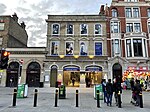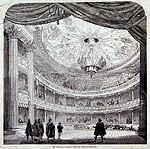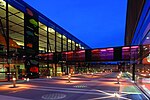Whitechapel Mount

Whitechapel Mount was a large artificial mound of disputed origin. A prominent landmark in 18th century London, it stood in the Whitechapel Road beside the newly constructed London Hospital, being not only older, but significantly taller. It was crossed by tracks, served as a scenic viewing-point (and a hiding place for stolen goods), could be ascended by horses and carts, and supported some trees and formal dwelling-houses. It has been interpreted as: a defensive fortification in the English Civil War; a burial place for victims of the Great Plague; rubble from the Great Fire of London; and as a laystall (hence it was sometimes called Whitechapel Dunghill). Possibly all of these theories are true to some extent. Whitechapel Mount was physically removed around 1807. Because Londoners widely believed in the "Great Fire rubble" theory, the remains were sifted by antique hunters, and some sensational finds were claimed. It survives in its present-day placename Mount Terrace, E1.
Excerpt from the Wikipedia article Whitechapel Mount (License: CC BY-SA 3.0, Authors, Images).Whitechapel Mount
Mount Terrace, London Whitechapel
Geographical coordinates (GPS) Address Nearby Places Show on map
Geographical coordinates (GPS)
| Latitude | Longitude |
|---|---|
| N 51.518108 ° | E -0.061868835 ° |
Address
Mount Terrace 26
E1 2BB London, Whitechapel
England, United Kingdom
Open on Google Maps






